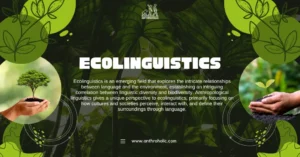AI Answer Evaluation Platform Live Now. Try Free Answer Evaluation Now
Exogamy
Exogamy is a social phenomenon of marrying outside one’s own community, tribe or social group. It is exactly opposite of the endogamous marriage wherein an individual marries another individual strictly inside his/her own social group. The term exogamy came from the Greek word ‘exo’ which means outside and ‘gamy’ which means mating.

The reason behind practising exogamy as a type of marriage is to avoid the ill effects of inbreeding between close relatives who are related with bloodline or genetics. It has been noted that many royal families and tribes who did not follow the practice of exogamous marriage faced serious health issues because of which they refrained from producing further generations.
The another purpose of exogamy is quite similar to that of endogamy, such as endogamous marriages were practised to retain wealth and resources generation after generation within the same social group, exogamous type of marriages are practised first for developing and maintaining relationships outside one’s own social group to create alliances and further pursuing the same motive of acquiring resources and wealth.
Origin
Exogamy’s existence could be traced to its cultural origin rather than to its natural origin according to the theories of the famous anthropologist Lewis Strauss. E.B Tylor quoted that “ man had to choose between marrying out or being killed out, therefore no society can exist without exogamy”. Morgan argued that to prevent the marriages between brothers and sisters Exogamy came into existence.
Other theories related to the origin of exogamy include the theory of Ferguson McLennan who argued that the practice of exogamy was introduced in some social groups due to the scarcity of women within the tribe because of which the men began to marry women outside their social group or tribe. For Emile Durkheim the birth of exogamy has a religious angle. He states that the members of a specific social group, clan or tribe have a religious relationship with each other like brothers and sisters. Therefore, they do not practise endogamy to show respect to their gods and religious beliefs.
Edvard Westermark was the one who gave the scientific angle to the origin of exogamy and also a biological basis to exogamy, he states that the probability of faulty genes in exogamy is much less than the endogamous type of marriages. Due to the recombination of different sets of gene pool, non identical and non regressive genes are passed onto the next generations ergo limiting the chances of transfer of deleterious genes in the offsprings.
Different forms of Exogamy
Exogamy has different forms around the world. Some of them are mentioned below:
- Consanguinity Kindred: It is the most common type of exogamy where the solemnization of marriage takes place between an individual and another individual that they choose from outside their own kindred group. This type of exogamous marriage is very strict in nature and sometimes even the people related to each other after the fourth generation are also not allowed to marry. For eg.- Aborigines of Australia, Orthodox greek christian families etc.
- Lineage and Clan: In this form of exogamy the solemnization marriage takes place outside clan and lineage i.e between individuals who do not share any type of common ancestry both in paternal and maternal sides. This kind of exogamy is very strict in nature and individuals are even punished harshly who have married within the clan by any chance. Strict exogamy is practised by most totem clans.Some examples of lineage and clan exogamy could be seen in ojibwa native, Fis of Albania etc.
- Gotra: Marriage between the individuals of different gotra is very common in Hindus of India.There can be union between people of same caste but union between same gotra is prohibited. Gotra could be considered as a lineage in an unbroken male line from a common male ancestor. A common gotra signifies the relationship of brother and sister. It is widely accepted and practised in Brahmins, Kshatriya, Baniya communities of India.
- Linguistic: Linguistic exogamy refers to the union between people who speak two different languages, it is a form of descent group exogamy. The offspring thus produced will speak the patrilocal language. People from Vaupes basin strictly follow linguistic exogamy. Also, Tucano tribe from Amazon practice such forms of exogamy.
- Dual Exogamy: Dual exogamy is a form of exogamy in which two groups of people continuously intermarry each other. In ancient tribes, the dual exogamy union was practised for generations.This resulted in forming new connections with unrelated social groups either by blood or language and later formation of a new social group, tribe or a nation. It is still practised by Eskimos, some Australian tribes, turkic tribes etc.
Conclusion
Exogamy and endogamy both types of marriages exist in different forms at different parts of the world. However, exogamy is a product of recent times. The probability of defective genes being carried out by the offspring is low. Exogamy reflects a more open minded, free and relaxed environment where social and economical achievements play a more important role than race, caste or religion.
FAQs about Exogamy
References
- Lévi-Strauss, C. (1949). Endogamy and exogamy. In Les structures élémentaires de la parenté (pp. 49-60). Paris: PUF.
- https://www.newworldencyclopedia.org/entry/exogamy_and_endogamy
- New Zealand Slavonic Journal, Victoria University of Wellington, 2002, Volumes 35-36, p.81 OCLC297663912




